What’s happening in Israel’s war against Hamas in Gaza? The latest and what could come next, explained
A recap and a look ahead
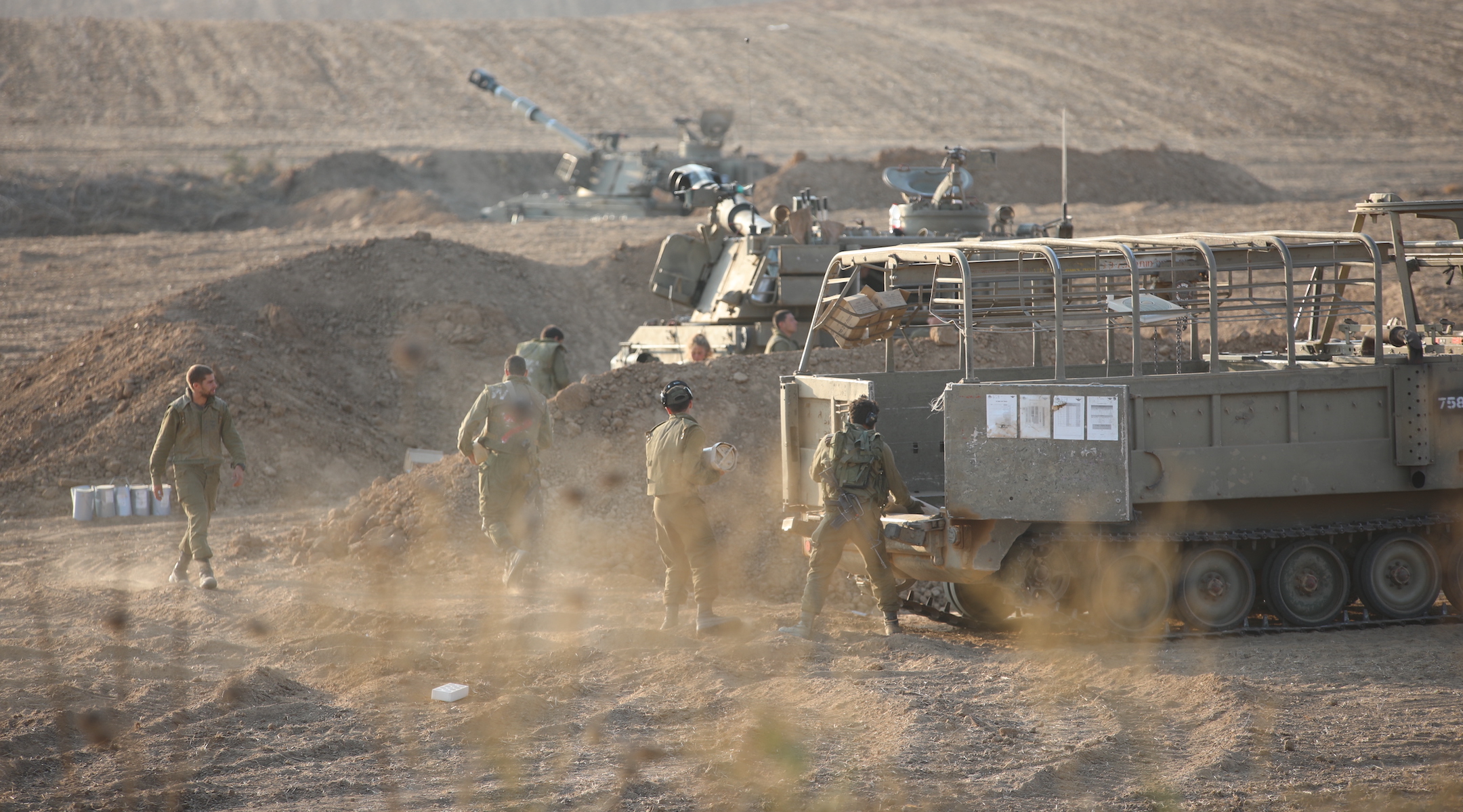
Israeli troops and armored vehicles near the Gaza border in Sderot on October 14, 2023. (Metin Yuksel Kaya/Anadolu via Getty Images)
(JTA) — Shortly after Hamas invaded Israel on Oct. 7, killing 1,400, wounding thousands and taking 200 captive, Israel declared war and vowed to defeat the terror group.
Since then, Israel has conducted punishing airstrikes in Gaza, killing thousands and preparing for a ground invasion as it is still counting bodies and learning of atrocities from Hamas’ incursion. It is also exchanging fire with Hezbollah, the Lebanese terror group, and cracking down in the West Bank.
The international response has also changed: alongside widespread horror at Hamas’ mass murder, Israel and its supporters are calling for a return of the hostages while its critics are pushing for a ceasefire and humanitarian aid for civilians in Gaza. President Joe Biden has staunchly backed Israel, traveling to the country this week and delivering an Oval Office address calling for aid — a question on which Americans appear split.
“We are fighting for our home, and it will take a long time,” Benny Gantz, a former defense minister and Israeli military chief who recently joined the government, said earlier this week. “The war in the south and, if needed, also in the north or anywhere else will take months, and the rebuilding will take years — and only when that is completed will we win.”
Here’s what is happening in Israel’s war with Hamas in Gaza — and what might happen next.
What is happening right now in Israel’s war with Hamas in Gaza?
In the days following Hamas’ invasion, Israel’s leaders made clear that their goal would be to defeat and dismantle the terror group. Since Oct. 7, Israel has been bombing Gaza from the air, destroying Hamas positions and senior commanders, and exacting a heavy death toll.
Hamas is an Islamist organization that is designated as a terror group by the United States and European Union, and is dedicated to Israel’s destruction. It is an offshoot of the Muslim Brotherhood and has controlled Gaza for more than 15 years.
Israel has killed at least 1,500 Hamas terrorists who invaded the country and, as of Friday, was still finding Gazans in Israel.
According to the Hamas-run Gaza Health Ministry, more than 4,000 Palestinians have been killed in Gaza since the war began, and footage has shown ruins of whole neighborhoods in the coastal territory.
Hamas and other terror groups have continued barraging Israel with rockets, and some of the casualties in Gaza have been due to failed rocket launches by those groups. That includes, according to the United States and Israel, a Palestinian rocket that struck a Gaza hospital earlier this week. Hamas has claimed that Israel is responsible for that blast.
Israel has been preparing for a large-scale invasion of the Gaza Strip, and has called up more than 300,000 military reservists. Last week, it also called on residents of the northern half of the Gaza Strip — more than 1 million people — to evacuate to the territory’s southern half. Hundreds of thousands have reportedly evacuated, though Hamas told residents to stay put.
“We’ve moved to attack,” Defense Minister Yoav Gallant said on Oct. 12. “I say now to everyone: We will wipe out this thing called Hamas. We will wipe it off the earth. This thing won’t continue to exist.”
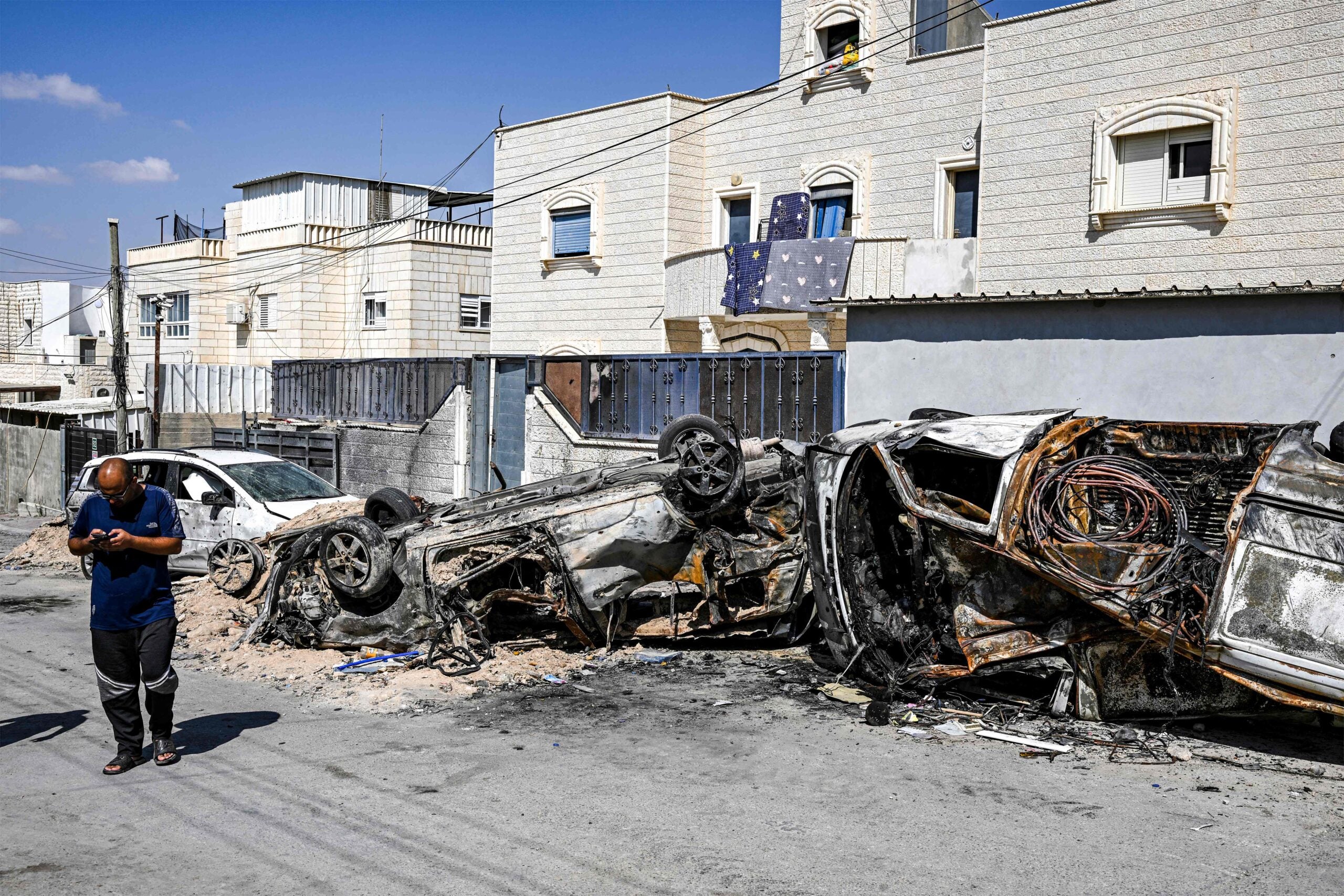
A member of the Bedouin community on October 14, 2023, stands next to vehicles destroyed in an rocket attack allegedly fired from the Gaza Strip in the village of Arara in the Negev Desert, that the residents say is constantly hit. In Israel’s southern Negev desert, Bedouins fear the war is coming closer to them after Israel declared war on the Islamist group Hamas on October 8, a day after waves of its fighters broke through the heavily fortified border and killed more than 1,400 people, most of them civilians. (Photo by Yuri CORTEZ / AFP) (Photo by YURI CORTEZ/AFP via Getty Images)
What could happen next?
How, exactly, Israel could defeat Hamas — and what happens afterward — remains unclear. Israel has fought several rounds of conflict with the Gaza terror group over the past 15 years, but none that promises to be this extensive.
The most major Israel-Hamas war up to this point took place in 2014, but in some measures it already pales in comparison. More than 2,100 Palestinians and 70 Israelis were killed in that conflict, numbers that have already been dwarfed since Oct. 7. And while that war lasted 50 days, a former senior Israel Defense Forces official estimated that this one could take six to eight months.
On Friday, Gallant said Israel’s war on Hamas would unfold in three stages: a campaign from the air and on the ground; a lower-intensity campaign that will aim to “eliminate pockets of resistance”; and the establishment of a new Palestinian governing entity in Gaza that would remove Israel’s responsibility for running the territory. The operation will reportedly focus on the Hamas stronghold of Gaza City
But who would that be? Right now, no one has the answer. Israel could attempt to install the Palestinian Authority, which governs Palestinian areas of the West Bank, in Gaza — but the P.A. was expelled from the territory in 2007 after a brief civil war with Hamas. On Friday, Israeli Prime Minister Benjamin Netanyahu rejected a handoff to the P.A. “All talk of decisions to hand over the Gaza Strip to the Palestinian Authority or any other party is a lie,” he said.
Gaza is also home to other terror groups, the largest of which is Islamic Jihad, which also fires rockets at Israel.
When Israel’s ground invasion will begin is also, as of now, an open question. On Oct. 19, Gallant said it would come “soon.” But former Prime Minister Naftali Bennett, who is currently out of political office, urged “patience” in a post on social media, saying that it was safer right now for Israel’s air force to “crush, crush, crush” Hamas.
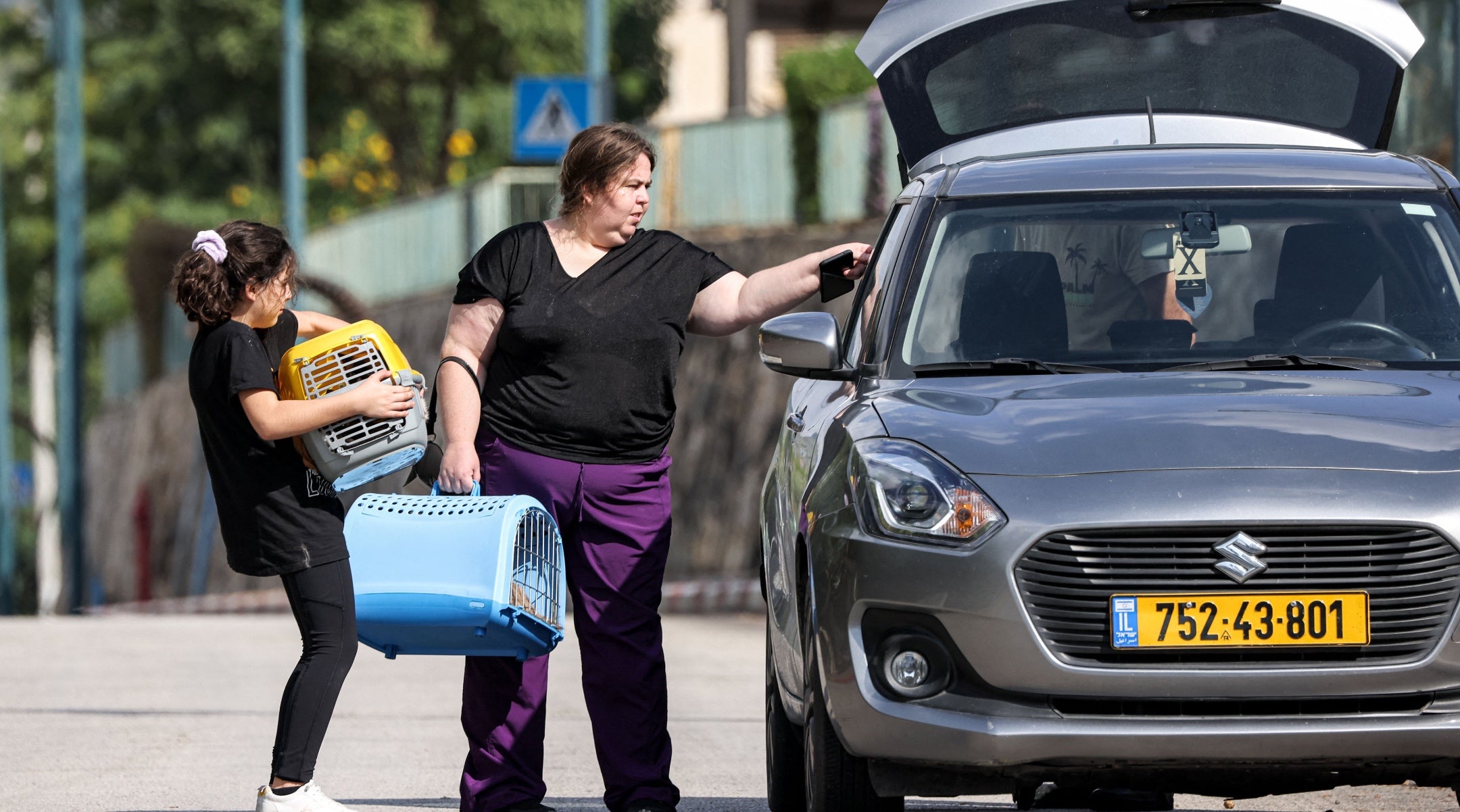
A woman and a girl hold pet carriers and other belongings as they prepare to depart from Kiryat Shmona in northern Israel near the border with Lebanon, Oct. 19, 2023. (Jalaa Marey/AFP via Getty Images)
Could there be a regional war?
Israeli officials appear to be most anxious about a second front opening on Israel’s northern border, where the major Lebanese terror group Hezbollah has shot missiles at Israel and Israel has fired back. Israel fought a month-long war in 2006 with Hezbollah that, until this month, was its bloodiest in decades.
Hamas and Hezbollah are both funded by Iran, a chief Israeli adversary that warned earlier this week that “other multiple fronts will open and this is inevitable” if Israeli strikes continue.
On Thursday, the United States intercepted three missiles heading toward Israel that were launched by an Iranian proxy in Yemen. The action was extraordinary in two ways: Israel has not considered the Iranian allies in Yemen to be an immediate threat, and has rarely relied on the American military to defend against attacks aimed at its territory. The United States has moved forces to the region as a warning to regional adversaries of Israel not to get involved in the fight.
Facing the prospect of escalating fighting, Israel has evacuated tens of thousands of residents on its southern and northern borders. Most of the city of Sderot, with a population of 30,000, has been evacuated, and on Friday, the northern town of Kiryat Shemona, which has 20,000 residents, was evacuated.
Israel is also cracking down on Palestinians in the West Bank. In overnight raids on Friday, the IDF arrested dozens of Hamas operatives, including the group’s spokesman. Israel has conducted hundreds of arrests in the West Bank since Oct. 7, and 70 Palestinians have been killed, according to Palestinian groups. That toll includes 13 Palestinians and one Israeli who were killed in clashes in the Nur Shams refugee camp Thursday.
The IDF is also investigating a unit that, according to footage, abused Palestinians and left-wing activists in the West Bank. According to Haaretz, a group of soldiers and settlers beat, stripped and burned cigarettes on the Palestinians, leading to the dismissal of an officer.
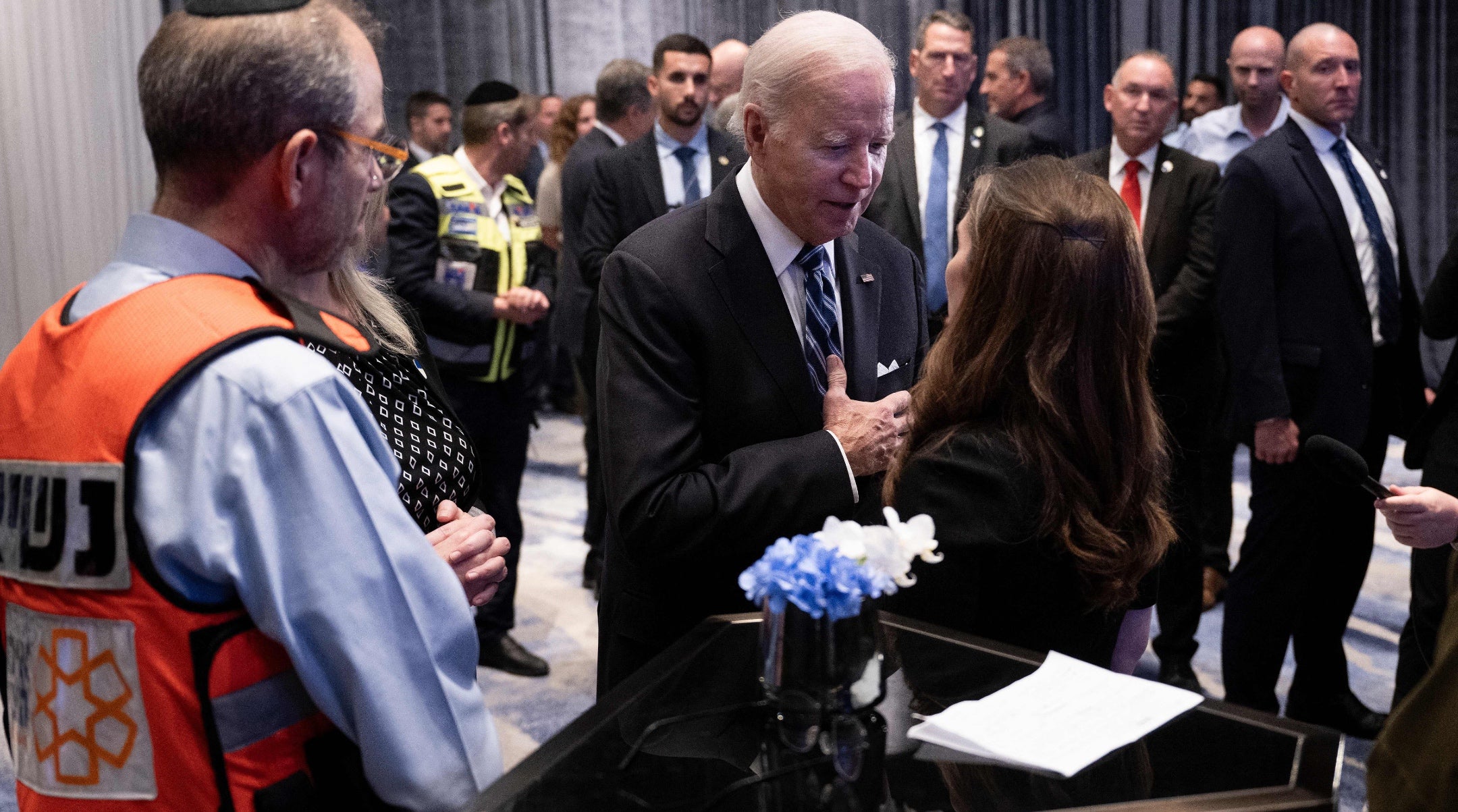
U.S. President Joe Biden meets with people affected by this month’s attacks by the terrorist group Hamas on Israel, in Tel Aviv, Oct. 18, 2023. (Brendan Smialowski/AFP via Getty Images)
How is the United States involved?
Biden has spoken out multiple times in support of Israel since Oct. 7 and traveled there on Oct. 18 — a rare if not unprecedented trip by a U.S. president to a war theater where American troops aren’t fighting. He also called for humanitarian aid to Palestinians and for Israel to obey the laws of war. The vast majority of Congress also supports Israel’s war effort, though the absence of a speaker of the House means that its members can’t approve an aid package.
On Thursday night, Biden delivered a rare Oval Office address in which he made the case that aid to Israel’s and Ukraine’s war efforts was vital for protecting American interests across the globe. On Friday, he made his formal aid request: more than $100 billion in total across the globe, including more than $14 million for Israel to bolster its military supplies, including its Iron Dome missile defense system.
“Hamas and Putin represent different threats,” Biden said in his address, referring to the Russian president who launched an invasion of Ukraine last year. “But they share this in common. They both want to completely annihilate neighboring democracies.”
Pro-Israel and pro-Palestinian rallies have taken place across the country, and a recent poll by CBS and YouGov shows that Americans at large support Israel. More than 50% of Americans sympathize with Israel “a lot,” compared to 28% with the Palestinians.
When it comes to aiding Israel with weaponry, though, opinions are mixed. On one hand, most Americans approve of Biden’s support for Israel or say he should be more supportive. But on the other hand, only 48% said the United States should send weapons or supplies to Israel.
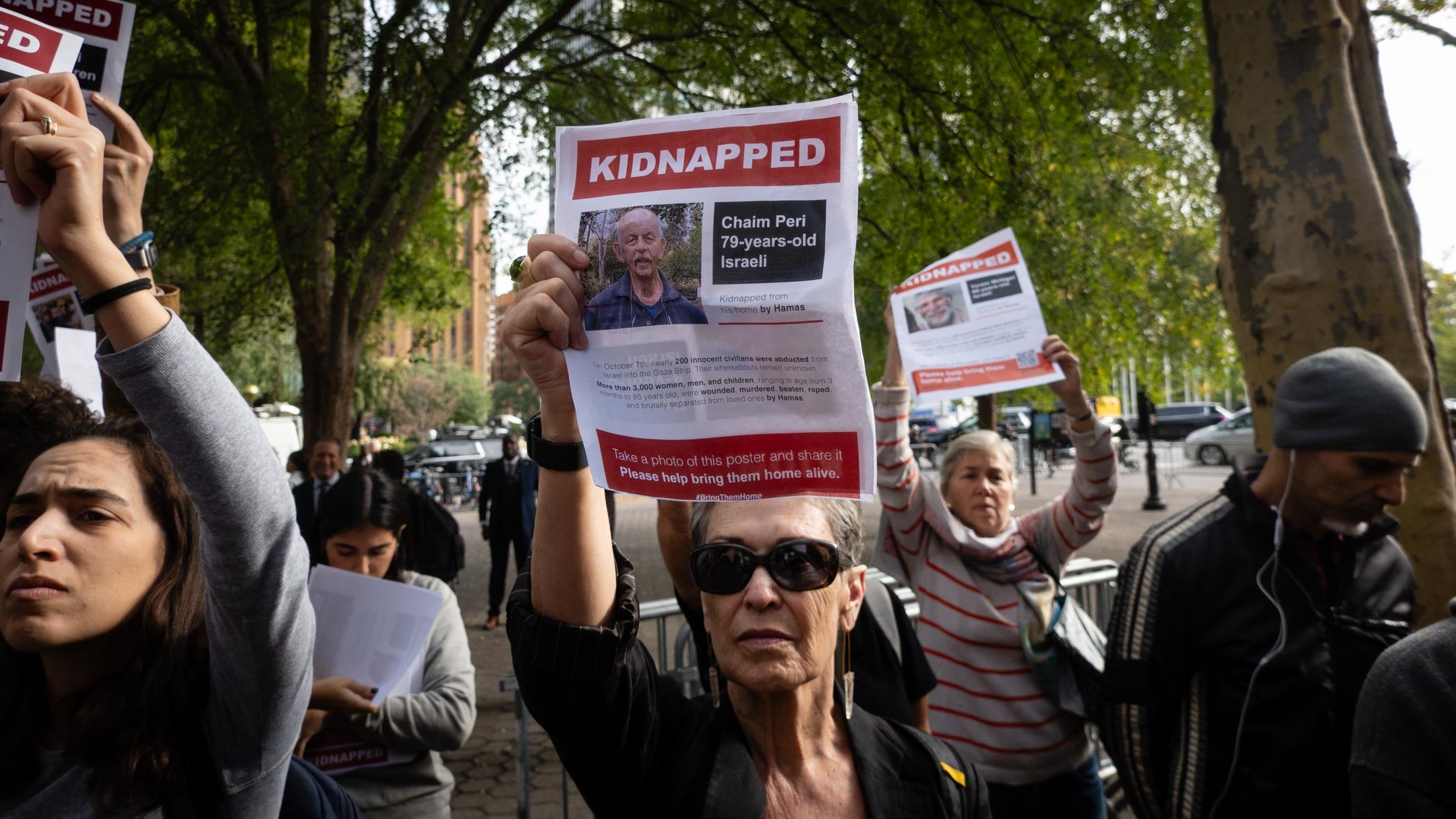
Israel supporters hold images of Hamas hostages at a rally demanding their release, in New York City, October 18, 2023. (Luke Tress)
What is happening with the hostages?
Hamas took more than 200 hostages during its invasion of Israel, including citizens of the United States and countries across the globe. Israel confirmed that approximately 30 of the hostages are children and up to 20 are elderly. More than a dozen are American citizens.
Families of the hostages have embarked on a global campaign, rife with symbolism, to keep the world’s eyes on their captured family members. They have met with world leaders, including Biden and Netanyahu. They have enlisted celebrities such as Gal Gadot and Helen Mirren to advocate for their loved ones’ release. They have set up empty Shabbat dinner tables in public spaces worldwide. And they have wallpapered cities around the world with posters bearing the hostages’ photos and names.
World leaders including United Nations Secretary General Antonio Guterres have called for the hostages’ immediate release. Earlier this week, Hamas released a video of one of the hostages, and on Friday, it freed two American hostages — a mother and a daughter reportedly from the Chicago area.
Israel has also led small military incursions into Gaza to recover hostages, though none has yet been rescued alive.
This is not the first time Hamas has taken hostages. In 2006, it captured Israeli soldier Gilad Shalit, who was exchanged for 1,000 Palestinian prisoners five years later this month. It is currently holding two Israelis who entered Gaza before this year, as well as the bodies of two soldiers killed in the 2014 war.
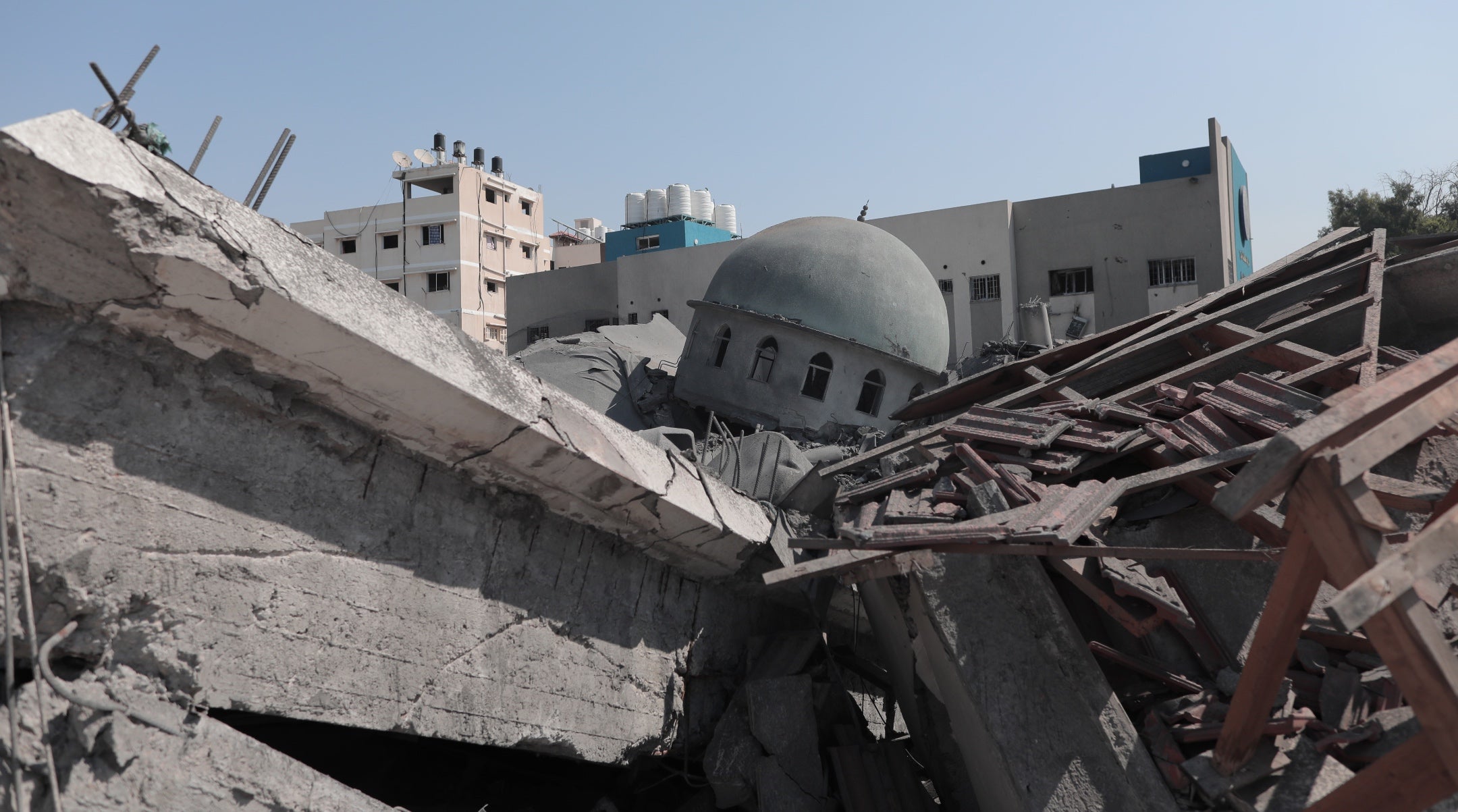
The Al-Abbas Mosque in Gaza City, Oct. 12, 2023. (Momen Faiz/NurPhoto/Getty Images)
What is happening with the Palestinians and humanitarian aid?
Israel has blockaded Gaza since Hamas took control of the territory more than 15 years ago, and days after Hamas’ invasion, Israel initiated a “complete siege” of Gaza. Israel did not let food, water, electricity or fuel into the territory.
Since then, the humanitarian situation in the territory has become increasingly dire, with reports of residents drinking salty water and medical care scarce and dwindling. Guterres traveled to the Rafah border crossing on Gaza’s border with Egypt in support of humanitarian aid, and while in Israel, Biden negotiated a deal for aid to travel into Gaza via that border crossing.
It appears, however, that the aid hasn’t yet entered the territory. On Friday, trucks of aid were seen sitting on the Egyptian side of the border, an Egyptian aid worker told CNN.
In addition, Israel has weighed creating “safe zones” for Palestinian civilians in the southern Gaza Strip where they would receive protection from the war, though at this stage, Israel is conducting airstrikes throughout the territory.
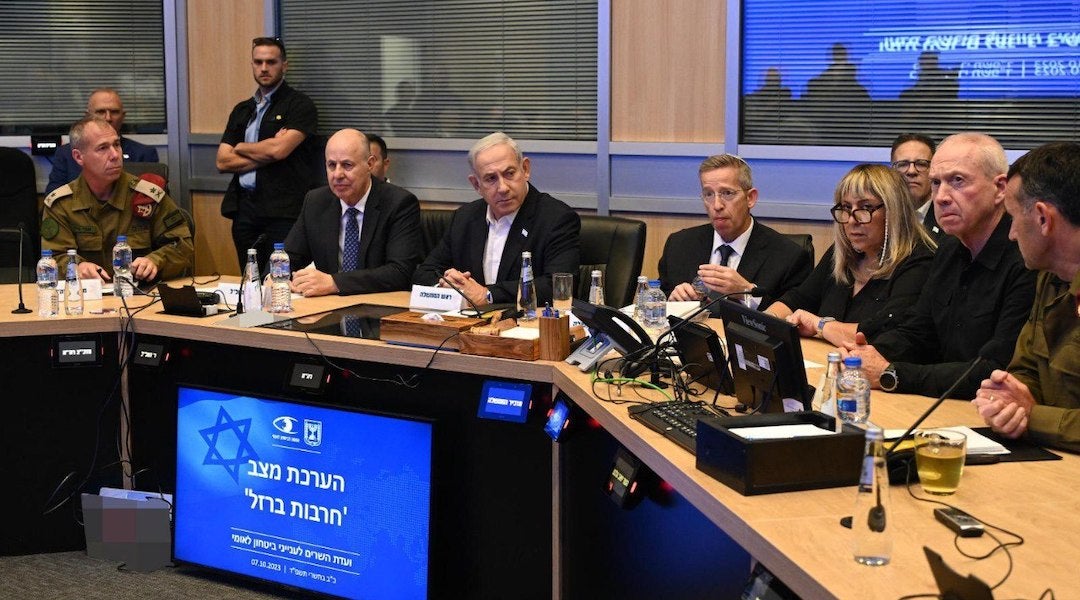
Israeli Prime Minister Benjamin Netanyahu, seated third from left, holds a meeting with his security cabinet in Tel Aviv, Oct. 7, 2023. (Haim Zach/GPO/Anadolu Agency via Getty Images)
How is the war changing Israel’s politics?
Hamas’ attack, the most lethal day for Jews since the Holocaust, appears to have completely taken Israel’s right-wing government by surprise, and in recent days, several military and intelligence officials, and government ministers, have apologized or taken responsibility for failing to prevent the massacre.
“We are responsible. I, as a member of the government, am responsible,” Education Minister Yoav Kisch said. “We were dealing with nonsense.”
Days after the invasion, Netanyahu brought Gantz’s centrist National Unity party into the government to form an emergency coalition to prosecute the war. Gantz, Gallant and Netanyahu now form a three-person war cabinet that is in charge of the campaign. All other government legislation, including Netanyahu’s controversial push to weaken the judiciary, has been shelved for now.
But Netanyahu has yet to publicly take responsibility, something 80% of Israelis want him to do.
This article originally appeared on JTA.org.















